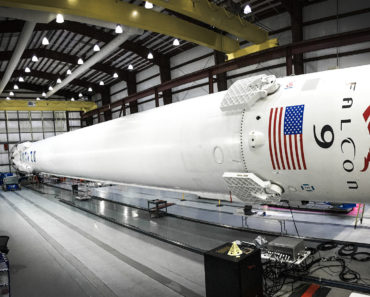If there was one thing everyone looked forward to during Steve Jobs’ tenure as Apple’s CEO, it was when he announced Apple’s newest product. He was noted for showing the public what they wanted before they even knew that they wanted it. Here is our list of his ten most iconic announcements.
1. Introduction of the Macintosh (1984)
On January 24, 1984, Steve Jobs introduced Apple’s first mass-market personal computer, the Macintosh. It included both a graphical user interface and a mouse. Labeled the “Computer for the rest of us,” the Macintosh was introduced by Jobs with the famous line: “today, for the first time ever, I would like to let Macintosh speak for itself.”
2. The iMac is Born (1998)
Jobs return to Apple ushered in a new era for Apple. With its multi-colored translucent plastic case, the iMac was phenomenally successful; More than 140,000 pre-orders were placed before it started shipping in September and Apple sold 800,000 iMac computers the first 139 days after its release. This was the first time Apple was profitable since Michael Spindler took over as CEO in 1995. This marked Apple’s shift from the “Macintosh” name to the more simplistic “Mac”.
3. OS X (1998)
At the time, the relationship between Apple and the developer community was at its lowest. Many had left the Macintosh platform because of dwindling sales and an uncertain future. Others were bemused at the demise of Rhapsody, Apple’s touted future OS. Steve Jobs killed it not long after taking over from Gil Amelio.
The Mac OS was old, buggy and lived in the shadow casted by Windows 95. The future of the Mac was bleak even when iMacs were selling like hot cakes.
All this changed on May 11th 1998. Steve Jobs unveiled the foundation of Mac OS X and demonstrated why Apple had acquire NeXT and its Unix based operating system. The transition to OS X was bold and looked painful for developers. Many needed to recode part, if not all, of their applications to make use of the new powerful OS.
But Apple was totally committed to OS X and Steve Jobs made it clear that it was the only way to go forward.
And it paid out.
Mac OS X brought a strong foundation to the Mac and is still being used 15 years later in every Macs. It’s also at the hearth of iOS, the operating system of the iPhone and the iPad. As it turned out, OS X was instrumental in creating the Post-PC era. How ironic.
4. Steve Jobs Becomes the CEO of Apple (2000)
During the early years of his second stint at Apple, Steve Jobs shared duties at two companies. He was CEO at Pixar and interim CEO (iCEO) at Apple.
When asked if he’d drop the interim title, Steve never gave a straight answer. Pixar was highly successful and Steve loved his job.
Most believed he would eventually become Apple’s new CEO. But there was always a possibility that Steve decided to leave Apple once he judged Apple strong enough to continue without him.
Then during a Macworld New York keynote, Steve Jobs had One More Thing to say. He surprised the audience by announcing he would drop the iCEO title. The place went completely ballistic!!!
Apple finally had their leader. They would be unstoppable for the following 10 years.
5. The iPod is Introduced (2001)
The launch of the tiny music player changed the world of consumer electronics and reshaped Apple. It can by argued that it’s the most important product Apple ever introduced!
That’s amazing because when iPod was announced, the tech industry wasn’t impressed. Rumors were that Apple would release a revolutionary PDA. Instead they ‘just’ unveiled a music player… Most were disappointed, me included.
Boy were we wrong and was Steve right!
Before the iPod, Apple was a niche computer maker with 3% market share and cool looking iMacs and iBooks.
iPod changed all that in the following years (it didn’t happen all at once!). With iPod:
- Apple became mainstream: Cool people, artists, influencers started to use the iPod in public places, displaying the iconic white earbuds. Soon, all wanted to have an iPod – even Windows users. In 2003, the silhouette campaign would strengthen Apple’s position as one of the coolest lifestyle brand on the planet.
- Apple became dominant: With ±70% market share in the digital music player market, Apple wasn’t the joke of the industry anymore. They had a successful product. The tech industry, the media and consumers would start to respect them again.
- Halo effect:Many iPod owners didn’t own a Mac but bought one down the way. It helped increase Apple’s computer market share.
- Profit maker: The iPod quickly became Apple’s most profitable business unit. It allowed Apple to increase it’s R&D investments and create amazing new products. It’s safe to say that a lot of iPod’s money went into the development of the iPhone and more products down this list 🙂
All that because of the iPod.
6. The iTunes Music Store Launch (2003)
The shift to digital music was already started, but no existing solutions was compelling enough for users to drop their music CD in favor of mp3s. It was a complex world of Digital Right Management and small online music portfolios. It sucked.
With the launch of the iTunes Music Store, Apple single handedly changed the business landscape of the music industry.
It brought tons of music (200,000 songs) of the biggest artists under a single and easy to use platform for just ¢99.
At launch it only worked on the Mac but a few years later a Windows version was released. With millions of songs in its catalog, it quickly became the best place to find music and overtook WallMart as the #1 music store in the world.
The iTunes Music Store helped Apple sell more iPods and brought the Apple brand in contact with even more people. One didn’t need to own an Apple product to purchase songs.
The lessons learned with the iTunes Music Store served Apple to start many other online activities and products. It’s responsible for the creation of the Apple TV. But more importantly, the creation of the App Store (more on this later…)
7. Switch to the Intel Chip (2005)
It’s funny that people would care about the type of chip used in a computer. I bet most people don’t know what runs inside their iPhones or Samsung Galaxy.
But back in 2005, everyone knew Apple didn’t run the ‘standard’ Intel chip and that wasn’t a good thing.
In the late ’90s, Apple made a point to show that their PowerPC chip was faster than Intel
In the mid 00’s, the PowerPC lost a bit of its edge, especially in mobile computing. Steve Jobs made a fool of himself when promising a PowerBook G5 that never came.
That all changed when Steve Jobs surprised many by announcing the Mac would adopt the Intel chip. It installed made Apple’s product roadmap more appealing since Apple would get chips as fast as their competitors. Developers were happier because it made porting their Windows app to the Mac easier.
But more importantly, in the mind of consumers, Macs were now as powerful as PCs. It made it easier for them to make the switch to the Mac. All that because of a chip…
8. iPhone (2007)
Just before Steve Jobs unveiled the iPhone he said “Today Apple is reinventing the iPhone“. He was halfway right.
iPhone did more than redefining what the future of phone would be. It created a truly personal computer. One that someone could carry on him/her at all time.
The iPhone became the most successful electronic product of all time (gross revenue & profits). It made Apple the most valuable company in the world – within a few years, the iPhone business was generating more profit than the whole Microsoft.
The influence of the iPhone is however more profound. It kicked started the mobile computing era which was rather stagnant for a few years.
- Suddenly, smartphones became the most wanted piece of electronic;
- Smartphone makers adopted/copied the look of the iPhone (Goodbye tiny keyboards);
- Mobile operators were forced to increase bandwidth tokeep up with iPhone’s users mobile surfing habits;
- Websites started to offer better web browsing experience to their mobile visitors.
The iPhone also led Apple to create the iPad which ignited the Post PC era (more down the list). The iPhone is in my opinion, Apple’s most impactful product ever made.
9. iPhone App Store (2008)
If you remember back in 2008, most software innovation came from the web. Groundbreaking services like YouTube, facebook and Twitterwere all online based. Little was happening on the desktop and most programmers were shifting their efforts to the web.
Not surprisingly, Apple decided to emulate that trend by allowing only online apps to be installed on the iPhone. That didn’t work really well…
A year after releasing the iPhone, realising their mistake, Apple announced the iOS SDK. It allowed developers to create iPhone Apps. The tech world welcomed the news with open arms.
But during the same keynote, Apple introduced something more important that didn’t get as much coverage: the App Store.
Now, iPhone users had an easy place to find and buy all kind of apps. Developers had a easy way to bring their apps to millions of customers. This was a game changer.
Thousands of free and paid apps were created for the iPhone – making it the most vibrant computing platform. These apps added tremendous value to the iPhone because it could be used to do many amazing things.
The App Store helped Apple sell millions more iPhone. It also differentiated iPhone from it’s competitors that didn’t have as many apps.
Overall, the App Store generated billions of profits for Apple and its developers.
It also paved the way to the release of Apple’s next blockbuster product, the iPad. With thousands of compatible apps already available at launch, the iPad had a major advantage.
10. iPad is Unveiled (2010)
Steve Jobs apparently said to some of his close friends that the iPad was the most important thing he’s ever done. It’s in fact the culminating effort of more than 30 years of his career.
He most certainly envisioned it a long time ago, although back then, he didn’t know what shape it would take.





